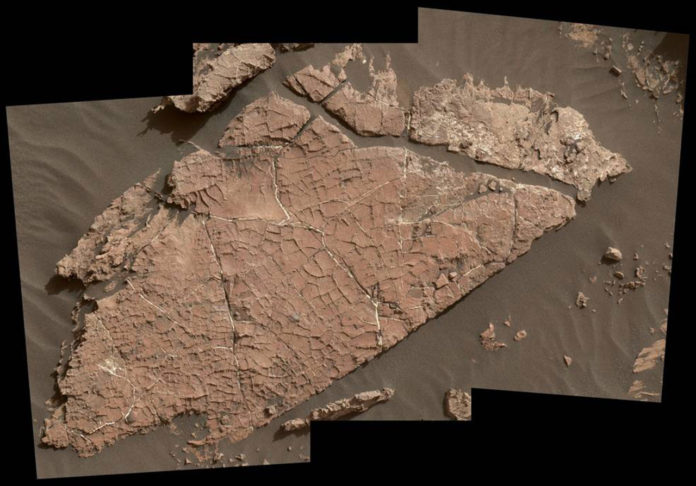Ongoing in situ exploration by the NASA’s Curiosity rover of Hesperian (around 3.3–3.7 Gyr old) sedimentary rocks within the Gale crater on Mars has revealed clay-bearing fluvio-lacustrine deposits with sporadic occurrences of sulfate minerals, primarily as late-stage diagenetic veins and concretions. The rover has found proof that is persuading scientists that there was an oasis at the base of that 150-kilometer-wide crater.
The discovery, which is published in the Nature Geoscience paper, hurls questions whether Mars could have sustained microbial life in the past. The scientists behind the study pointed out the rocks that are enriched with mineral salts as evidence of shallow briny ponds that went through episodes of overflow and drying. The deposits serve as a watermark created by climate fluctuations as the Martian environment transitioned from a wetter one to the freezing desert it is today.
Now, scientists are keen to understand how long this transition took and when precisely it happened. This latest clue may be a sign of findings to come as Curiosity heads toward a region called the “sulfate-bearing unit,” which is expected to have formed in an even drier environment.
Lead author William Rapin of Caltech said, “We went to Gale Crater because it preserves this unique record of a changing Mars. Understanding when and how the planet’s climate started evolving is a piece of another puzzle: When and how long was Mars capable of supporting microbial life at the surface?”
The Gale Crater, which is believed to be between 3.5 and 3.8 billion years old, serves as a reminder of the difference between Mars’ climate then, which was wet, to the desolate, arid climate it has today.
Scientists analyzed the salts they found in a 500-foot-tall section of sedimentary rocks known as “Sutton Island,” visited by Curiosity in 2017. Based on the series of cracks at a location named “Old Soaker,” the group realized the area had intermittent drier periods. In any case, the Sutton Island salts suggest that the water also concentrated into the brine.
Scientists speculate that the geological formations may have resembled the salt lakes in South America’s Altiplano. Streams and rivers flowing from mountain ranges lead to similar basins as the Martian terrain. And those lakes are similarly influenced by climatic changes.
Fedo, who specializes in the study of sedimentary layers at the University of Tennessee, said, “Curiosity is currently running across large rock structures that could have formed only in a higher-energy environment such as a windswept area or flowing streams. Wind or flowing water piles sediment into layers that gradually incline. When they harden into rock, they become large structures similar to “Teal Ridge,” which Curiosity investigated this past summer.”
“Finding inclined layers represents a major change, where the landscape isn’t completely underwater anymore. We may have left the era of deep lakes behind.”
“We can’t say whether we’re seeing wind or river deposits yet in the clay-bearing unit, but we’re comfortable saying is it’s not the same thing as what came before or what lies ahead.”
